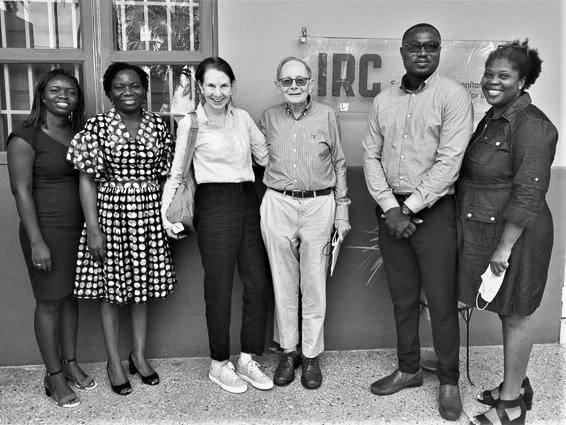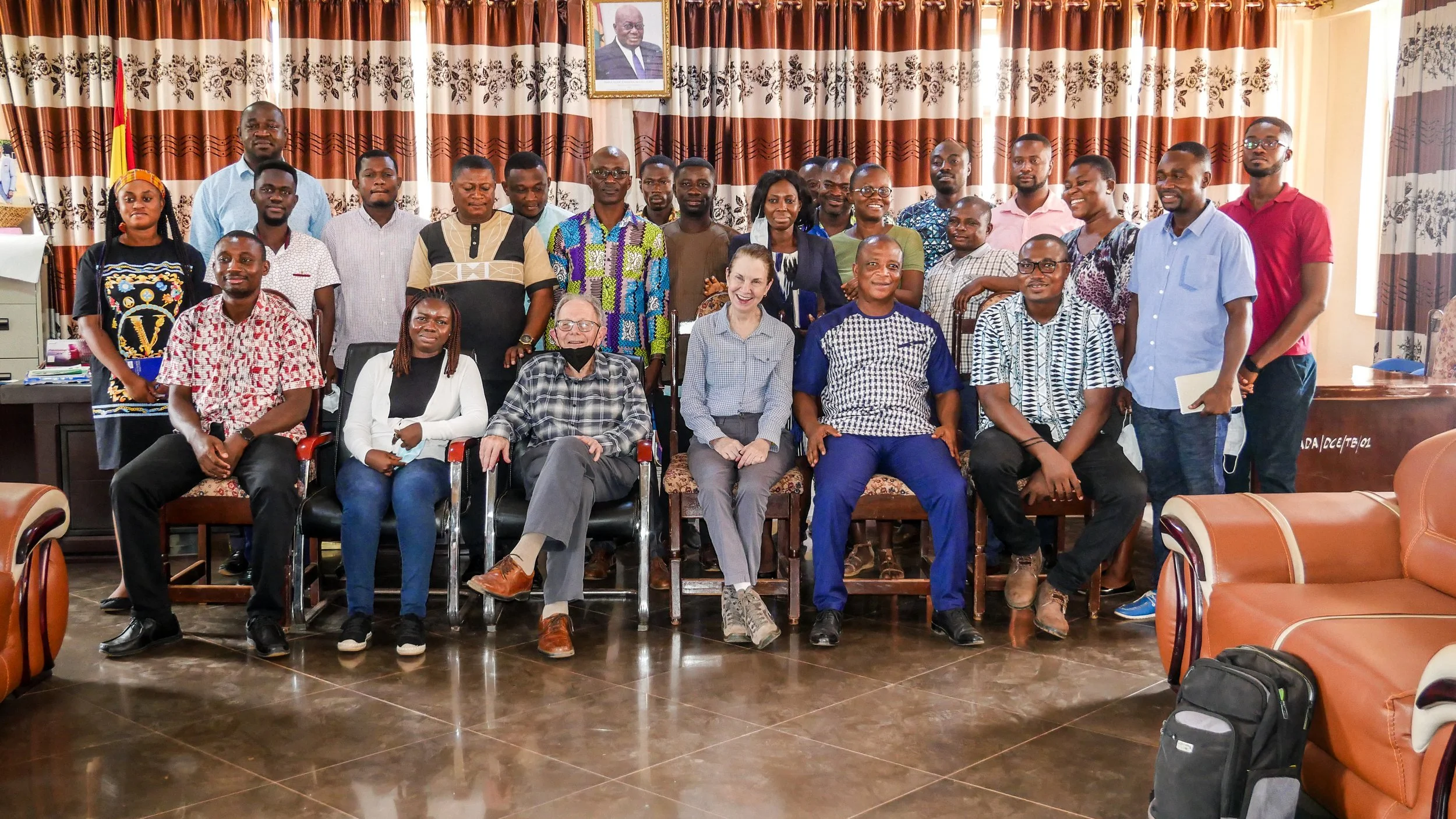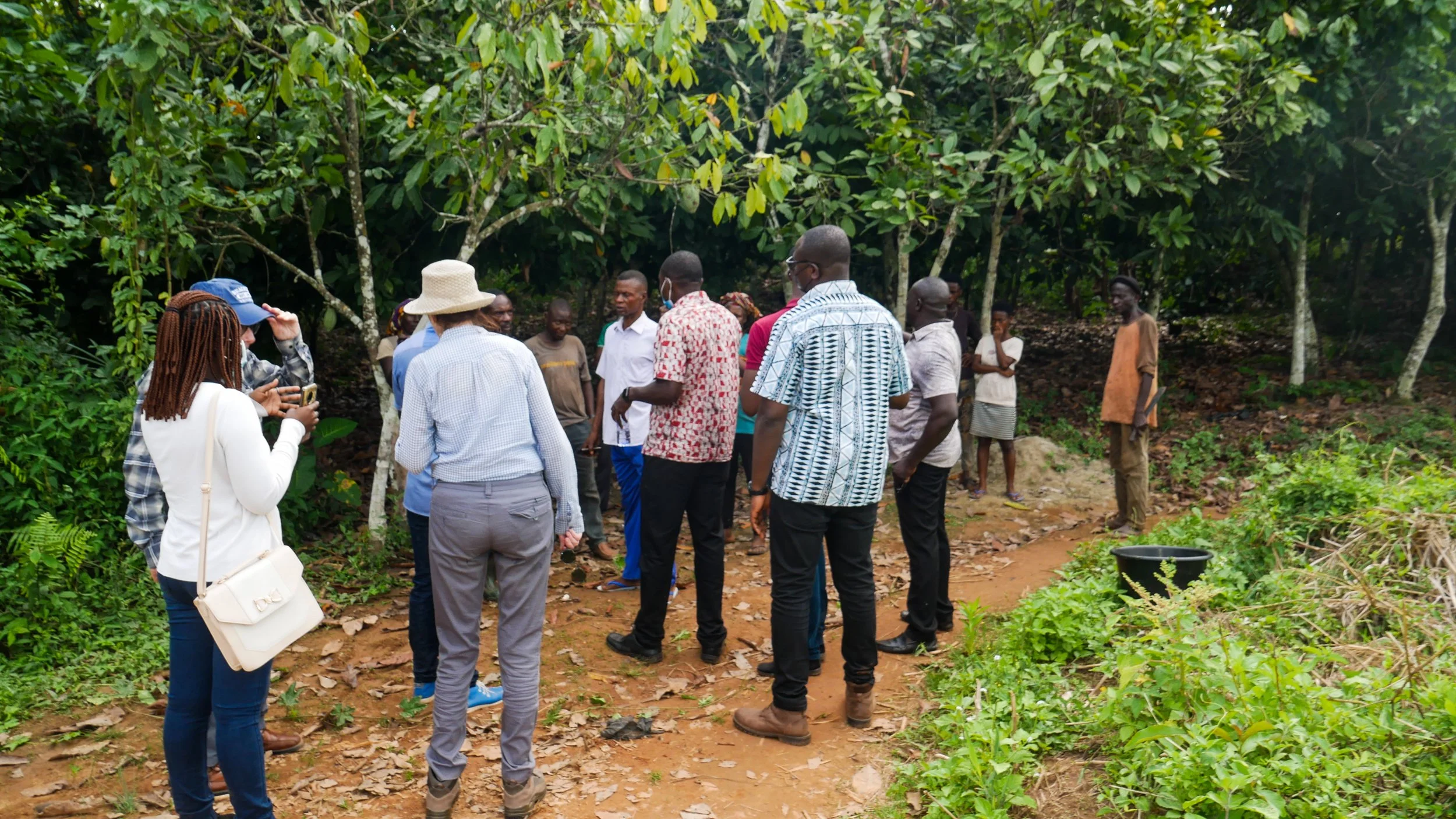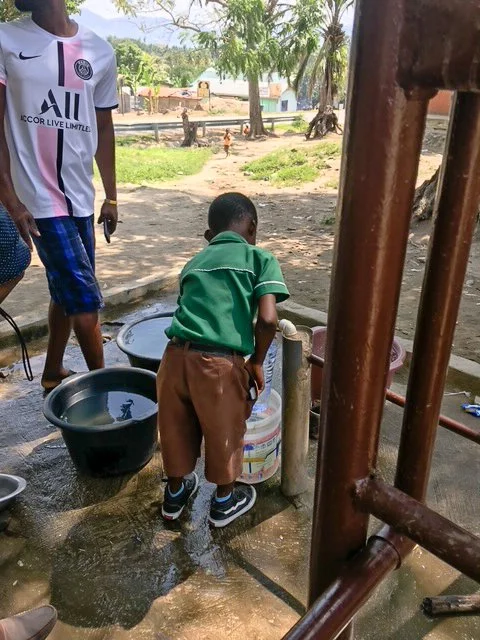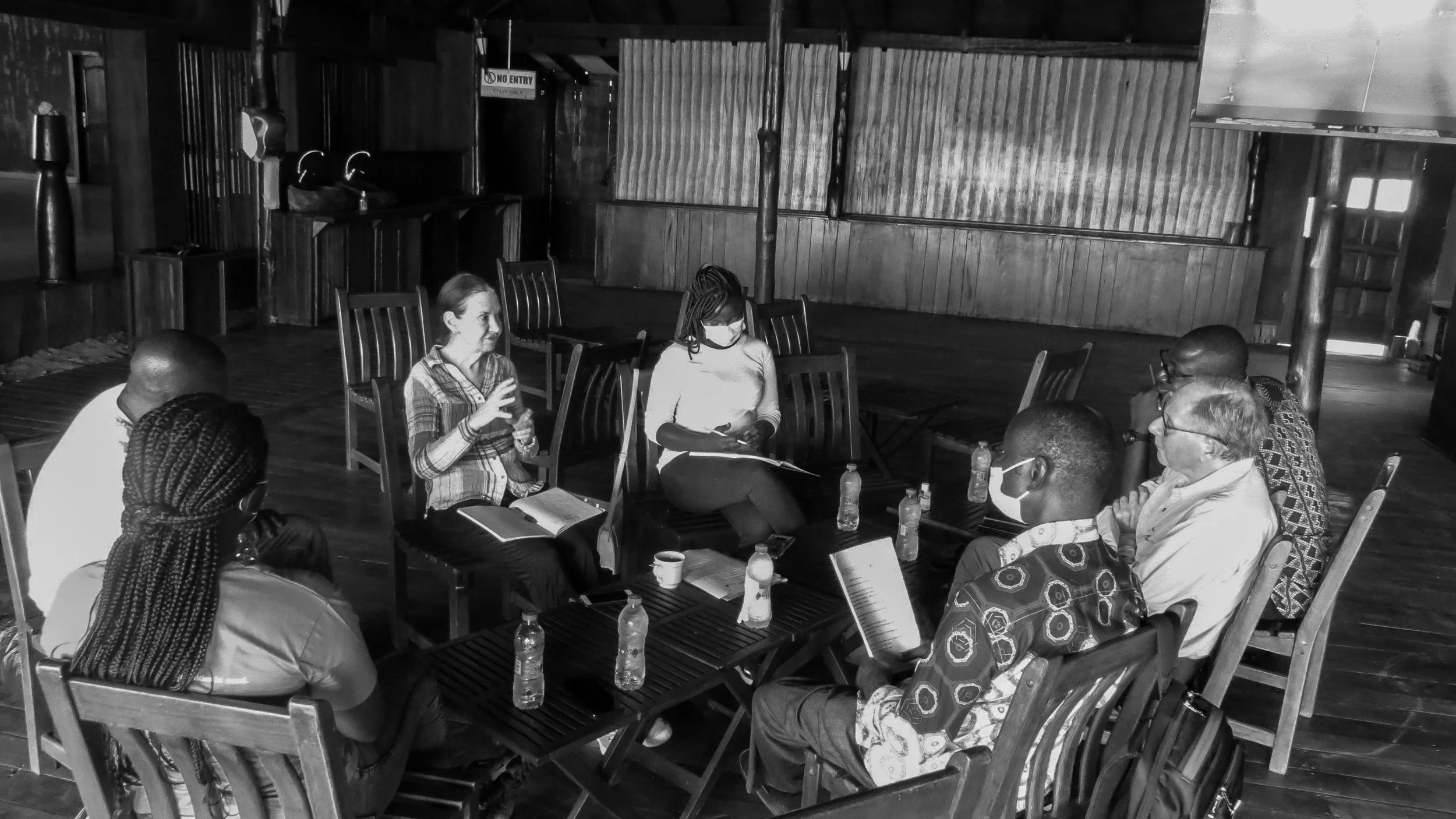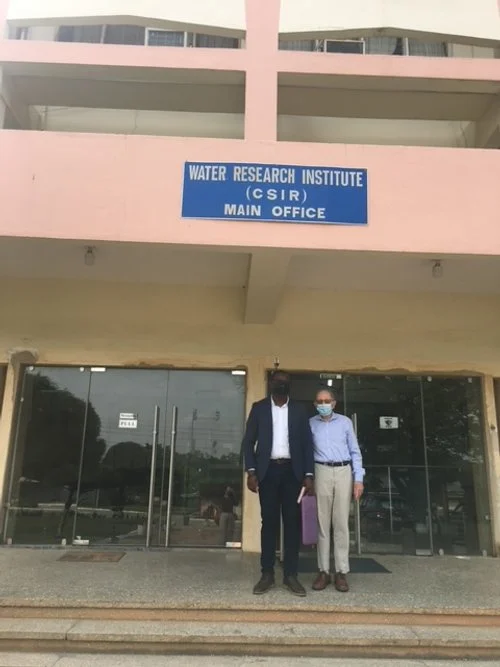Ghana Trip
November and December 2021
November 28, 2021, was the scheduled departure day from JFK to Accra, capital of Ghana. The acquisition of documents to permit departure from the USA and admission to Ghana was excruciating. A variety of uploads and payments had to be made. Assistance from even the Delta Diamond desk was woefully unsuccessful. Despite arriving at the airport early to work out the various problems, we were able to check in only within minutes of being late for the flight. Ignoring that incredibly stressful beginning, the next thing we knew the plane was landing in Accra on Monday the 29th mid-afternoon. Exiting the Accra airport with negative COVID tests in hand, we headed to the hotel. A meeting was held on that evening with Albert Armooh from the “waterforeveryone” Swiss NGO, our partner in the Abono/Nyameani sites (2 schools and 1 clinic) approximately an hour drive away from Kumasi. A visit to these sites was planned for December 2nd. Unfortunately, Albert could not travel with us, however lengthy discussions determined what was to be accomplished in that trip.
Early on the 30th EWfE had a meeting with Vita Duti and her staff at the IRC office in Accra to discuss the possibility of EWfE joining the consortium in the IRC Asutifi North District project to provide pure water to the “impossible to reach” villages in the District. The meeting was highly successful with an agreement to make a site visit on the next day, December 1st. We headed immediately to the Accra airport for an approximately 45-minute flight to Kumasi, the second-largest city in Ghana. Dinner that evening in Kumasi included a chat with a nephrologist, Dr. Elliot Tannor (nephrologist). He was well disposed to helping us build awareness of our project in the local Ghanaian population.
On December 1st we traveled to Kenyasi in the Asutifi District starting in the early morning, to meet various government officials and staff working on the project. Presentations were made by all parties and an extensive question and answer period took place.
After the meeting, EWfE traveled to Kwaku Bodom, one of the hard to reach villages in order to determine its appropriateness for installation of the EWfE device called the NUF500.
After greetings and conversation, we were led to the village water source, which was a borehole filled with water all year round but fecally contaminated due to the absence of sanitation.
The site is perfect for installation of the device. A MOU was to be drawn up for mutual review.
December 3rd was a travel day
flying from Kumasi to Accra and driving by truck to the town of Ada, which is on the banks of the Volta River, the boat launch location to visit the islands.
On December 2nd, a driving trip from Kumasi to Abono/Nyameani was made. Two of the 3 sites were working well but 1 site had an issue which was being resolved when we arrived. Discussions were held as to the visibility of local fundraising as well as involving more directly the district government to take the responsibility of expanding sites within the villages themselves in this area. Currently, the 3 devices are located at the elementary school, the high school, and the clinic. The children go home after school to the contaminated village water sources, creating a very imperfect situation. The goal for “waterforeveryone “and EWfE is to place devices in an estimated 5 different places WITHIN the villages of Abono and Nyameani. The relevant question is whether the local churches and local government will agree to help us.
On Saturday and Sunday meetings were held with the EWfE team members to discuss the future plans for the organization interspersed with trips to the island sites. It was so wonderful to see our villager friends, check on device operations, drink coconut water straight from the coconut trees and bask in the warm breezes of the island environment. On Sunday night we headed back to Accra.
The first thing on Monday the 4th in the am,
EWfE had an extensive meeting with the Council for Scientific and Industrial Research (CSIR) leadership to solidify the concepts of the research project that we will participate in jointly.
During this meeting, the skeleton of the protocol was drafted which has as its main component, the analysis of source water in a highly varied sampling of EWfE device sites in Ghana. The sites include types of water sources that EWfE is working with at this time; the Volta River, boreholes, and streams and lakes. The examination of the water sources will include all pathogens; viruses, bacteria, and parasites. In addition, all product water from the device at each of the sites will be examined for all pathogens.
On Tuesday the 7th, we headed back to Ada and the islands. All-day Wednesday was spent on the two islands.
On Thursday, we had the great pleasure of spending the day with our very good friends Modoc and Grace. The two of them and another colleague Patrick have operated 2 NGOs (ADPO and SkyFox) in the Afram Plains and Dambai area of Ghana for 35 years. This area is about 8 hours drive from Kumasi, requiring 2 segments of road travel and a minimum of 2 boat rides, one of which is 2 hours, and maybe now a 3rd boat required due to flooding. It is travel that cannot be grasped until one has participated in it. Arduous and unexpected are words that come to mind. EWfE has 4 working devices in this area and would like very much to expand the technology into many other needy villages. Strategies for such expansion were discussed. The final item discussed was the possibility of providing a device with solar power instead of the current small gasoline pump. Modoc has technical staff available to test and evaluate such a process. This would be very exciting.
Friday was the day of our departure from Accra. The am started with a trip to the CSIR office for the required COVID test for entry into the USA. The balance of the day was spent meeting with the Ghana EWfE staff, planning for our next trip – hopefully, June 2022, and the discussing of aspirations for the year 2022.


